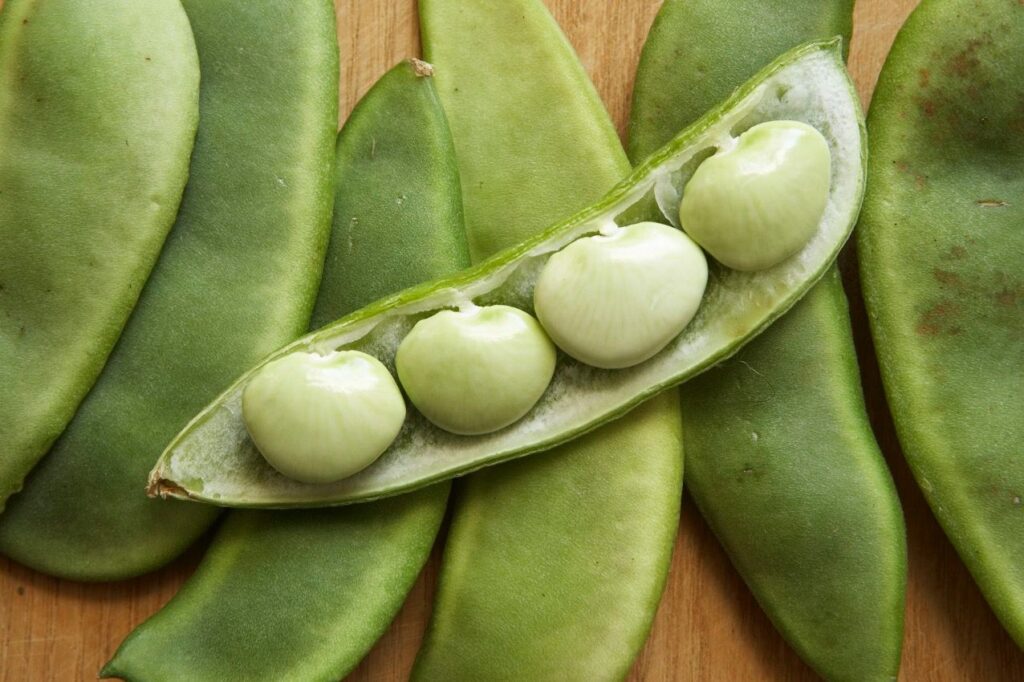Because of their buttery, rich taste, lime beans are often called butter beans. They can be found in nearly every grocery store and have an oval-shaped, flat, greenish or whitish appearance. Although many people may have avoided lima beans when they were young, they can be a great food to add to your meals at any age. Lima beans are low-cost, high in vitamins, and simple to prepare.
Lima Bean Nutrition Facts
A cup of boiled and drained lime beans (without salt) provides 209 energy, 11.6g protein, 40.1g carbohydrates and 0.5g fat. Lima beans are a great source of iron, nutrition C, and fiber. The USDA has provided the following nutrition data.
Carbohydrates
Lima beans have low energy but are full of complex carbs. Lima beans contain three types of carbohydrates: sugar, starch, and fiber.
Starch is responsible for more than half of the carbohydrates found in lima beans. These carbs provide the frame with short power. Fiber is the next largest source of carbs found in lima beans. Fiber aids in stabilizing blood sugar levels, improves digestion and makes you feel fuller. Lima beans also contain a small amount of sugar that is clearly going on.
Lima beans have a Glycemic Index (GI) of 46. Foods with a lower GI (55 or less) are considered low-glycemic foods.
A 100-gram serving of lima bean is ready to be calculated. Glycemic loads are calculated by taking into account the amount of food consumed while estimating the food’s effect on blood sugar. Glycemic loads below 10 are thought to have minimal effect on blood glucose reactions.
Fats
A cup of lima beans has 1 gram of fat, making them low-fat meals. Fitness experts consider a maximum amount of polyunsaturated fat .
Protein
Lima beans contain nearly 11g of protein per serving, which is slightly more than other types of beans. However, lima beans are not a complete source of protein. Another medicine is also available in our store you can easily Nizagara 100 and enjoy your life. The body cannot make complete proteins, so it must consume them as part of a healthy diet. You can get all the amino acid you need by eating different protein sources every day.
Vitamins and Minerals
Folate is found in lima beans, which contains 34 micrograms of vitamin B (or approximately 4% of your daily value). Thiamin, along with smaller amounts of other B nutrients, is also beneficial.
Lima beans contain manganese and copper as well as magnesium, potassium, copper and phosphorous. Lima beans contain small amounts of zinc and selenium as well as calcium.
Calories
Boiling lima beans provides 209 calories. 76% are carbs and 22% are protein. A few other calories come from fats.
Summary
Lima beans are low in fat and rich in healthy complex carbs, fiber, protein, and vitamins. Lima beans are rich in potassium, iron and magnesium. They also contain zinc, calcium and vitamin K.
Health Benefits
Researchers have studied lima beans and legumes for many years. These legumes are a common food that is eaten all over the world. Research shows that increasing your intake of lima beans (or any other bean) can provide certain health benefits.
Allergies
It is possible to have an allergic reaction to lima bean beans, although it is not common. It is more common to have allergies to peanuts, soybeans and lentils. People who are allergic to one legume may also react to other legumes or become sensitive to them. If you have a legume-hypersensitive reaction, communicate with your medical doctor about Cenforce 150 is safe and a good way to devour.
It Helps With Weight Control
A review of the dietary benefits of legumes was published in Obesity Reviews. It found that replacing energy-dense foods with legumes can have beneficial effects on weight loss and related problems such as diabetes, cardiovascular disease, and metabolic syndrome. Energy-dense meals contain high levels of energy, but very low amounts of nutrients.
To reduce calories and fat, study authors recommend that excessively-calorie- and excessive-fats meaty components (such as burgers and sausages) be replaced with beans or combined with legumes in the production of these ingredients.
Lower Cholesterol
Beans can be included in weight loss plans to lower LDL cholesterol.
May Boost Gut Health
Beans are a great source of resistant starch. This is believed to be able to feed the best microorganism colonies in the intestine and contribute to a healthy gut microbiome.
Stabilizes Blood Sugar
Another study found that increasing the intake of legumes, peas and lentils (a group known as “pulses”) can help people with diabetes and those without it improve long-term glycemic control in their diets.
Brain Health Supports
Lima beans are a good source of manganese. This mineral is crucial for the brain and health of the anxious machine.
Negative Effects
Antinutrients are compounds that interfere with nutrient absorption. However, this term is misleading because the interference occurs only when the compounds are consumed in large quantities. Antinutrients have negligible effects on the amount of lima beans that you will likely to consume.
One particular observation focused on antinutrients found in lima beans. The researchers found that washing, cooking, and toasting beans (specifically autoclaving, which is the use of a stress chamber for 20 minutes) significantly reduced or eliminated antinutrients.
Despite not having an autoclave in your kitchen, it is unlikely that you don’t need one. However, it is important to be aware of the potential antinutrients found in legumes and grains. The materials can be deactivated by beans if they are cooked properly and soaked well.
Anemia patients can have a difficult time consuming antinutrients. Talk to a registered dietitian if you have questions about antinutrients or have been diagnosed with anemia.
When They’re At Their Best
Lima beans are usually in season during the late summer and early fall. However, most consumers can still find lima beans at their grocery stores year-round in dried, frozen and canned forms. Look for whole, plump and uncracked legumes when you buy them. Avoid pods or beans that look yellowish, wilted, dried or noticeable.
Frozen vegetables are often cheaper and just as nutritious. Make sure to choose frozen beans that have no added ingredients, or very few. Lima beans can also be canned but may be packed in saltwater with up to 300mg sodium per half-cup.
Even better, you can grow your own. Lima beans make a great starter crop. They must be grown in full sunlight. To harvest, they need 60 to 90 hours of heat and frost-free days.
Food Safety and Storage
How you store beans will depend on how you bought them. Both should be kept in the fridge. Unshelled lima bean pods last for 7 days.
You can blanch shelled beans and store them in the freezer for up to three months. Shelled lima beans can be dried and stored in a dry area for up to 10 days.





More Stories
6 Best Exercises to Strengthen Your Heart
4 Signs You Might Have a Respiratory Infection
Benefits of Soybeans for Your Nutrition and Health